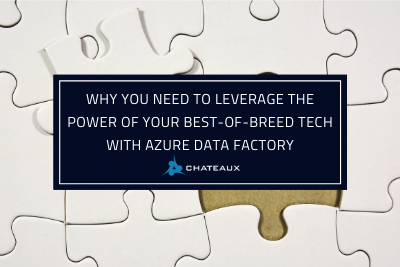So, you know you need to undertake a data warehousing project, but where do you start and what should you expect? (If you’re not sure if you need to undertake a project – take a look at our blog here.)
We have outlined three key stages to help you understand what a data warehousing project will entail, which will hopefully make the thought of a project a little less daunting!
Stage 1 – It’s all about the prep….
When undertaking a data warehousing project, it is important to answer the following questions before you proceed:
- Who is your audience?
When considering audience, it’s very important to identify your project’s stakeholders. These are people who have decision-making power within the company. They will also decide whether the project is a success. A product owner should also be identified. This is the person who represents, champions, and defends the project to the stakeholders. They work with the stakeholders to ensure maximum value is gained from the project. This person does not necessarily have to be in a technical role; they could be a project manager or in a more commercial position. The key is that the product owner should be a self-starter who is open to learning and willing to work alongside Chateaux and follow advice from our data warehousing experts.
- What goals would you like to achieve first?
Within many businesses, projects initially focus on sales. This is because the value of the project can be demonstrated very quickly; however, there may be another area of need within your business that you’d like to focus on first.
Stage 2 – What are the deliverables?
Now that your product owner is defined, this person will work with the stakeholders to define a list of deliverables. For example, would you like static reports, dashboards, or analytics to be created? The option you choose relates directly to what you’d like to achieve first. If the data warehouse is created to serve someone in an operational role, a static report could be prioritized so the staff member can easily get the information needed each day to help them better perform in their role. If the project is to serve someone in more of a decision-making role, for example a CFO, analytics could be better-suited, as it enables data-driven decision making. If this sounds daunting, don’t worry! Chateaux will conduct an interview with you to help your team determine the best deliverables for your individual project.
A prioritized list should then be made by the product owner and stakeholders detailing both the value you’d like to achieve from this project and the effort you’d like to put forth to meet those goals. The focus should be equal against all stakeholders’ priorities, if possible. Making this list is a good way of ensuring that all stakeholders will be happy with the outcome of the project.
Stage 3 – Project launch!
To ensure success, the project should initially run for three months after stages one and two have taken place. Typically, two Chateaux staff members will work on a data warehousing project for the duration of the three months. There will be an initial assessment of the priority list created, and they will then come back to you and let you know, realistically, what percentage of your list can be achieved within the time frame. It is key that you have a clear idea of what the success of your project looks like and that this vision is communicated to the Chateaux team so that they can ensure the project fulfills those goals.
Once the initial three-month period has come to an end, you will be able to see a very clear return on investment, and many companies will then choose to extend the project and complete more of their priority list.
If you’d like to know more about data warehousing, take a look at our service page or get in touch with a member of the team today by emailing us at [email protected].








